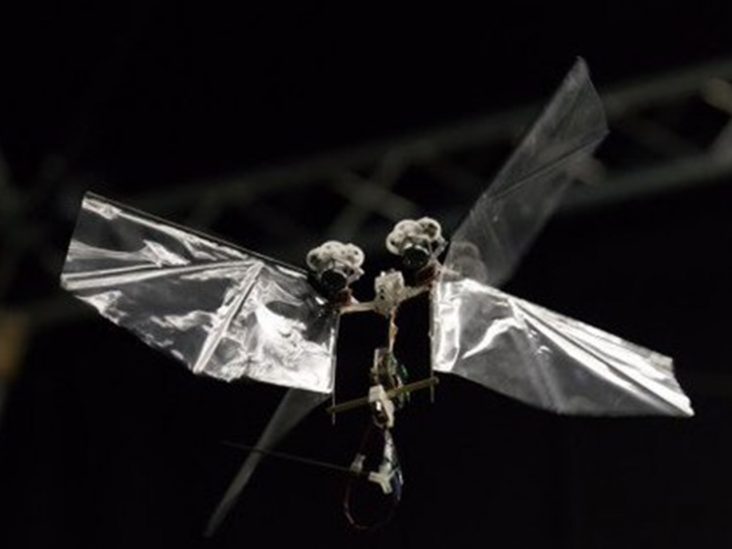Robots that Fly Like Fruit Flies – Advancement in Drone Technology

The Dutch scientists have developed robots that are inspired by flying insects. These robots have wings like insects and have exceptional flight qualities. This robot as per the engineers who designed it is extremely agile in nature besides having the wings like insects to help it fly by flapping them thus controlling the flight and being able to even hover on spot and fly in any direction.
Just like insects flap their wings to stay airborne, the robot also uses its wings that flap beating 17 times per second and are able to stay airborne besides controlling the flight via minor adjustments.
This robot can fly at the speed of 25 km/ hr and have the ability to do 360-degree flips and aggressive maneuvering similar to those of loops and barrel rolls. The design of the robot includes its weight of 29 grams and a wingspan of 33 cm. The battery once charged is powerful enough to allow a flight range of 1 km or hovering of 5 minutes.
The concept of this robot and the performance is very much similar to that of fruit flies and it also works on the principle of fruit flies and could exhibit the same method that fruit flies apply by controlling their turn angle so as to maximize their escape performance.
This study has been already published in the Science journal on Thursday. This has opened doors to robots that can help you out with time-consuming tasks like gas leak detection or crop survey with ease. The advantage is obviously the size, light weight, speed and ultimately the low cost.
Though big drones have the ability to fly, though tight or narrow places remain inaccessible for them. This is when Robo-flies can work wonders. Another such innovation is already done by the engineers at the University of Washington. The robot fly they have designed is just a bit more than that of a toothpick. It derives its power from lazer beam that comes through an onboard circuit that does the process of converting laser energy into electrical energy needed for operating the wings. The circuit boosts seven volts that come out of the photovoltaic cell of over 240 volts, required for the flight. The circuit also consists of a microcontroller that acts like a brain of the fly helping it control the wings.
Inspired by real flies this technology is futuristic and can do wonders if used smartly enough.
Just Know about Top Engineering Colleges in Bangalore
*Sourced from the Internet

